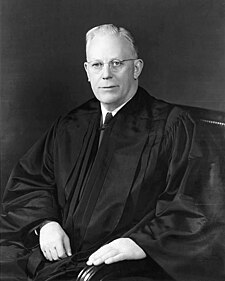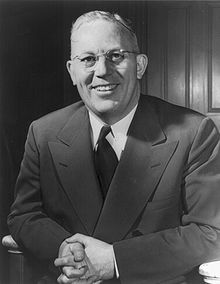Earl Warren
| Earl Warren | |
 | |
| | |
|---|---|
| In office October 2, 1953[1] – June 23, 1969 | |
| Nominated by | Dwight D. Eisenhower |
| Preceded by | Fred M. Vinson |
| Succeeded by | Warren E. Burger |
| | |
| In office January 4, 1943 – October 5, 1953 | |
| Lieutenant | Frederick Houser (1943–1947) Goodwin Knight (1947–1953) |
| Preceded by | Culbert Olson |
| Succeeded by | Goodwin Knight |
| | |
| In office January 3, 1939 – January 4, 1943 | |
| Governor | Culbert Olson |
| Preceded by | Ulysses S. Webb |
| Succeeded by | Robert W. Kenny |
| | |
| In office 1925–1938 | |
| | |
| Born | March 19, 1891 Los Angeles, California |
| Died | July 9, 1974 (aged 83) Washington, D.C. |
| Spouse(s) | Nina Elisabeth Meyers |
| Alma mater | University of California, Berkeley |
| Religion | Protestantism |
| Signature |  |
| Military service | |
| Service/branch | United States Army |
| Years of service | 1917–1918 |
| Rank | |
Contents[show] |
[edit] Education, early career, and military service
[edit] Family
[edit] Attorney General of California
[edit] Governor of California
[edit] U.S. Supreme Court
[edit] Appointed to Supreme Court
[edit] The Warren Court
[edit] Decisions
[edit] Brown (1954)
[edit] Reapportionment
[edit] Due process and rights of defendants (1963-66)
[edit] First Amendment
[edit] Retirement delayed
[edit] Warren Commission
[edit] Legacy
[edit] Death
[edit] Honors

[edit] Electoral history
| [show] Earl Warren electoral history |
|---|
[edit] See also
- Earl King, Ernest Ramsay, and Frank Conner, murder case he prosecuted in Alameda County, California





